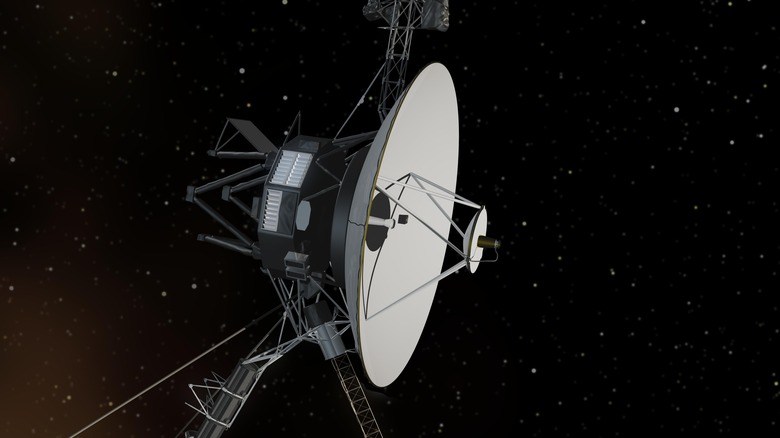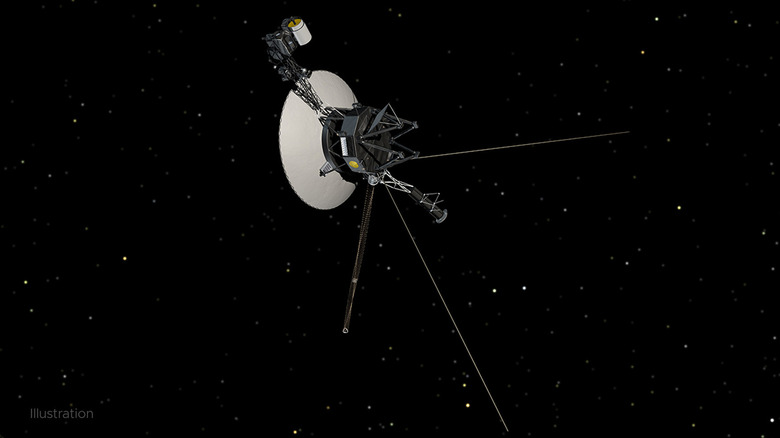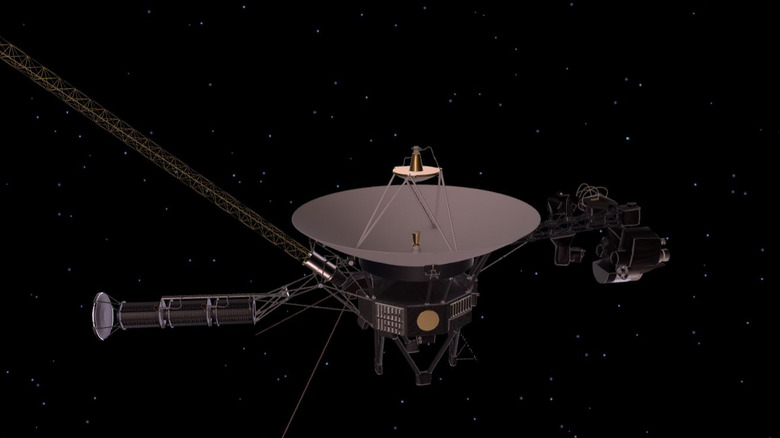How The Voyager Spacecraft Are Still Running After More Than 40 Years
Back in the 1970s, a pioneering pair of missions were launched. NASA's Voyager 1 and Voyager 2 spacecraft have been journeying away from Earth since their launches in 1977, and with more than 40 years of space travel under their belts, they are now the most distant man-made objects ever. They have traveled out beyond the orbits of Neptune and Pluto and are now exploring the region between stars called interstellar space.
The two spacecraft are the first spacecraft to travel outside the magnetic field of the sun, called the heliosphere, but as they move further and further away and get older the amount of power they have access to is getting less and less. When you think of the leaps forward made in technology in the last decades, it's incredible that the Voyager missions are still running at all — but not only are they still operating, they are still gathering scientific data.
Keeping the spacecraft running requires extremely careful power management, but the mission managers at NASA's Jet Propulsion Laboratory (JPL) say they are aiming to keep these intrepid explorers going for as long as they possibly can.
"The science data that the Voyagers are returning gets more valuable the farther away from the Sun they go, so we are definitely interested in keeping as many science instruments operating as long as possible," said Linda Spilker, Voyager's project scientist at JPL.
Problems and glitches
As you would expect from decades-old technology, the Voyager spacecraft have experienced their share of bugs. Recently, Voyager 1 experienced a strange glitch with its attitude control system, which is responsible for orienting the spacecraft correctly. The control system was sending back garbled data, but the spacecraft was still pointed as it was supposed to be.
Engineers found that the problem had occurred when the system started using an old computer instead of the current computer it was supposed to be using. They were able to fix the problem by switching to the newer computer, but they didn't find out why the error had occurred in the first place.
"A mystery like this is sort of par for the course at this stage of the Voyager mission," said Suzanne Dodd of JPL, project manager for Voyager 1 and 2, pointing out that the mission was running far longer than the original designers had ever intended.
A glitch hit Voyager 2 as well when a power supply issue meant that a protection routine was inadvertently toggled on when it didn't need to be in 2020. That was concerning because it meant that the spacecraft was using power unnecessarily, and the spacecraft was placed into a mode with its instruments powered off. Fortunately, engineers were able to fix that within a few weeks to get the routine turned off and the spacecraft's instruments turned back on.
Prioritizing power usage
The spacecraft can't run forever, however, as they have limited amounts of power to draw on. Each year, each spacecraft produces four fewer watts of power from its nuclear power systems, called radioisotope thermoelectric generators (RTGs), which means the team has to be selective about which instruments and systems stay powered on. The more instruments that are on, the faster they will drain power, and the sooner the mission will end.
Voyager 2 has five currently operating science instruments, while Voyager 1 has four instruments because one failed shortly after launch. The scientists on the team want to keep these instruments on to keep collecting data, and they have determined that they can run the instruments for a few years longer by using some backup power. This backup power was originally intended for a safety system, but by tapping this they can keep a science instrument on Voyager 2 running until 2026.
Using this power is a risk, as it is part of a system designed to regulate the voltage coming to the instruments. However, the JPL team thinks the risk is worth the potential of more years of data. "Variable voltages pose a risk to the instruments, but we've determined that it's a small risk, and the alternative offers a big reward of being able to keep the science instruments turned on longer," Dodd explained. "We've been monitoring the spacecraft for a few weeks, and it seems like this new approach is working."
Even after one of Voyager 2's instruments is shut off in 2026, the other four instruments will keep running and the mission could continue running for years ahead, exploring the farthest reaches of the solar system.


